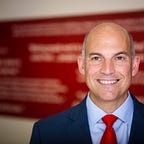Being Mindful of the How and What of Leadership through COVID-19
(Originally published as a LinkedIn article: https://www.linkedin.com/pulse/being-mindful-how-what-leadership-through-covid-19-matt-waller/)
All of us in a position of leadership right now are acutely aware of the importance of our roles in helping our organizations navigate the challenges of the coronavirus pandemic. And it’s more important than ever that we use a solid framework to shape our thoughts, decisions, and actions as leaders.
If we are “winging it” and only using the “trust-the-gut” leadership model, we are putting ourselves and our organizations at unnecessary risk. There will be risks we should take and times when we need to trust our instincts, but we should have a good reason — and know that reason — for doing so.
A leadership framework provides a filter that puts sound reasoning behind our leadership. The leadership framework I use comes mainly from combining two conceptual frameworks: John Kotter’s 2001 article in Harvard Business Review and a 2007 article by Deborah Ancona, Thomas W. Malone, Wanda J. Orlikowski, and Peter M. Senge. Kotter addresses the “what” of leadership, while Ancona et al cover the “how.”
Kotter’s focus is on what leaders do — setting direction, gaining alignment, and providing motivation. Ancona, et al. address how leaders lead — sensemaking, relating, visioning, and inventing. The components can be combined to form a tool (Table 1.0) that helps me make sure I’m being comprehensive in leading a high-priority initiative. There is more going on, but the framework helps prevent blind spots or lack of attention to important aspects of leadership or important ways of leading.
It is no panacea, but it works well for me, and it might be helpful for you as you give structure to your leadership in the days and months to come. As you can see in Table 1.1, it is helping me think through how well we are leading strategic efforts and where we might need work while leading through the COVID-19 crisis.
Table 1.0: Integrating the “What” and “How” of Leadership (This Table comes from my LinkedIn article)
Table 1.1: Examples — Leading through COVID-19
Early in the crisis, we needed to help make sense of what was going on and what we should do about it. I sent one email to the faculty and staff and another email to the students. These emails explained that we and our parents have lived through many crises, survived and thrived. People are resilient and this crisis will pass. The good news is that living through crises like this allow for character building and powerful life-lessons. This theme persisted but others emerged, as well.
Senior Associate Dean Anne O’Leary-Kelly emphasized to the faculty that perfection was not the goal in going online with our courses in the first phases. Our leadership team worked for the students who were missing the tremendous face-to-face classroom interactions, our traditions, basketball and baseball, awards ceremonies, and May commencement. (However, plans are for them to participate in our December commencement.) Nevertheless, these losses were painful for all of us, including the family and friends of the graduating seniors.
Lots of communication is necessary because there are so many changes — the pass/fail grading option for students, which students can decide by course; promotion and tenure clock extensions; reimbursement of some housing fees; permission to bring home equipment from the offices; permission to go to the office to pick up something that was left behind; permission to go to the office to record a video for the online courses; and many more changes. We took orders from faculty and staff who wanted their desk chairs from their offices to be delivered to their homes, and we hired a company to make the deliveries.
New issues and challenges come up daily. Associate Dean Brent Williams set up a Walton College Pandemic Task Force on Microsoft Teams for a daily meeting from 8:45 a.m. to 9 a.m. He designed the meeting to use the agile methodology. This task force included all the associate deans, the assistant dean of finance and administration, the assistant dean for student success, the director of technology and the director of human resources. This recurring meeting has been very important for ensuring that we are aligned and has helped us with the ongoing process of sensemaking.
As you can see from Table 1.1, we are working hard to relate to our faculty, staff and students; that was obviously needed. But we also need to relate externally, especially given our land grant mission. For example, the head of our Center for Business and Economic Research, Mervin Jeberaj, published, COVID-19 Economic Impact in Arkansas, which had the most visits of any of our blogs for weeks.
Associate Dean Alan Ellstrand did a great job of collecting information from other universities about the impact of the crisis on their budgets, as well as on recruiting and student retention. These types of activities are crucial to our sensemaking and decision making.
When I think about the activities that are competing for my time right now — and those that are competing for the time of my leadership team members — I need to make sure we are avoiding unnecessary distractions that prevent us from achieving our mission and vision. A framework helps me stay on point and it helps me encourage and assist my leadership team so that they stay on point. If you have an effective framework for your leadership, that’s great. If you don’t have one, feel free to use mine and adapt it to your needs. If you have ideas about how to improve this framework, please let me know.
(Originally published as a LinkedIn article: https://www.linkedin.com/pulse/being-mindful-how-what-leadership-through-covid-19-matt-waller/)
